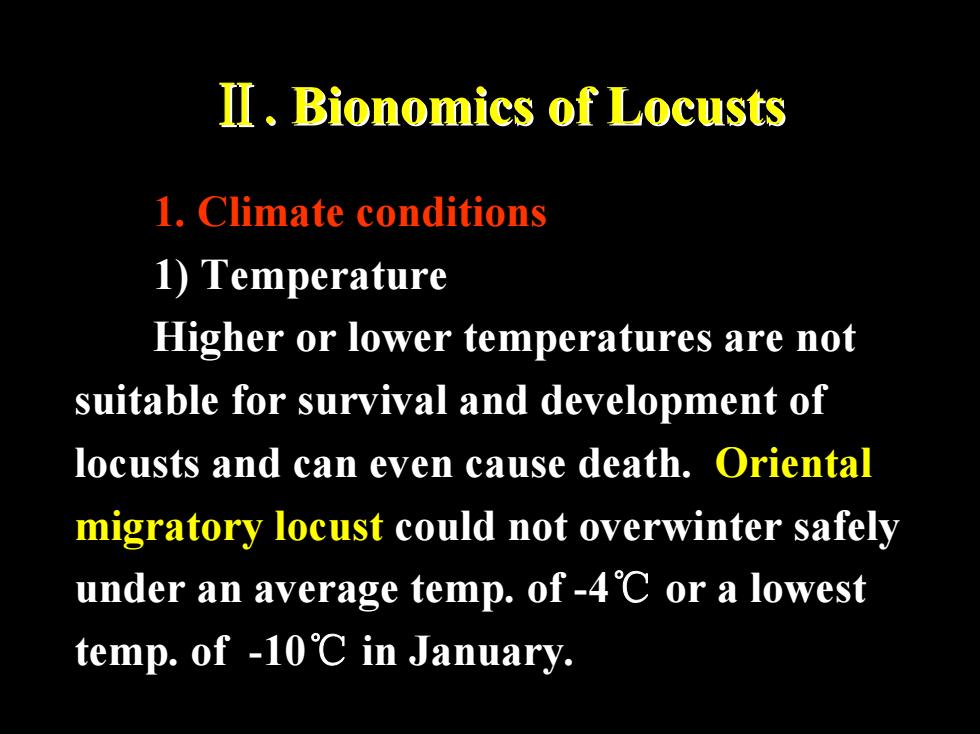
2.Life Cycle Generally with facultative diapause. Most species overwinter as eggs in oocyst in soil,a few overwinter as adults
2. Life Cycle Life Cycle Generally with facultative diapause. Most species overwinter as eggs in oocyst in soil, a few overwinter as adults

3,behavior 1)Food habits:Polyphagous pests or euryphages.Adults and nymphs feed on the same plants. 2)Feeding mannerisms:Nibbling leaves of plants.Cause more severe injury during dry seasons. 3)Activity rhythm:mating and feeding during daytime.No obvious phototaxis
3. behavior behavior 1) Food habits: Polyphagous pests or euryphages. Adults and nymphs feed on the same plants. 2) Feeding mannerisms: Nibbling leaves of plants. Cause more severe injury during dry seasons. 3) Activity rhythm: mating and feeding during daytime. No obvious phototaxis

3,behavior 4)Gregariousness:As the density of the population increases the locust transforms progressively from the solitary phase to the gregarious phase with intermediate phases. 群集的
3. behavior behavior 4) Gregariousness: As the density of the population increases the locust transforms progressively from the solitary phase to the gregarious phase with intermediate phases

3,behavior 5)Ovipositing:Adults are multi-mating and oviposit eggs into soil in batches during periods of 1
3. behavior behavior 5) Ovipositing: Adults are multi-mating and oviposit eggs into soil in batches during periods of 10~30d

II.Bionomics of Locusts 1.Climate conditions 1)Temperature Higher or lower temperatures are not suitable for survival and development of locusts and can even cause death.Oriental migratory locust could not overwinter safely under an average temp.of -4'C or a lowest temp.of -10'C in January
Ⅱ.Bionomics of Locusts Bionomics of Locusts 1. Climate conditions 1) Temperature Higher or lower temperatures are not suitable for survival and development of locusts and can even cause death. Oriental migratory locust could not overwinter safely under an average temp. of -4℃ or a lowest temp. of -10℃ in January